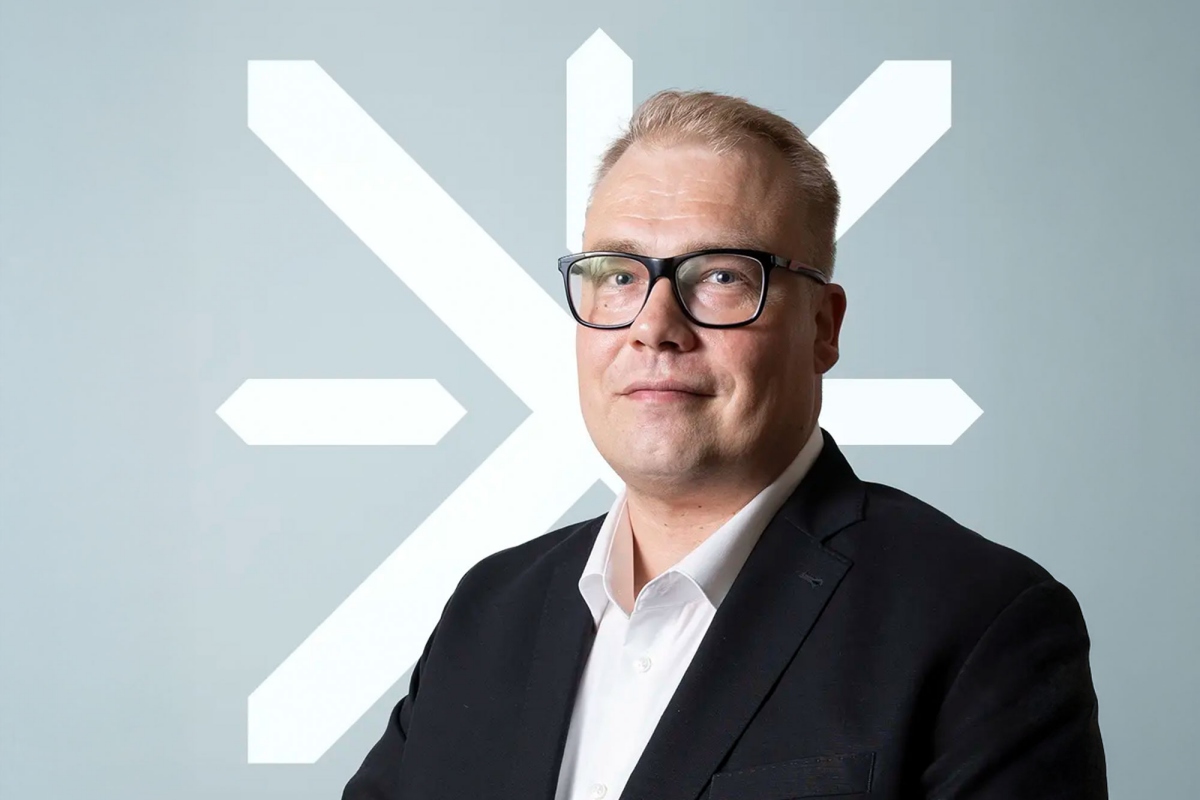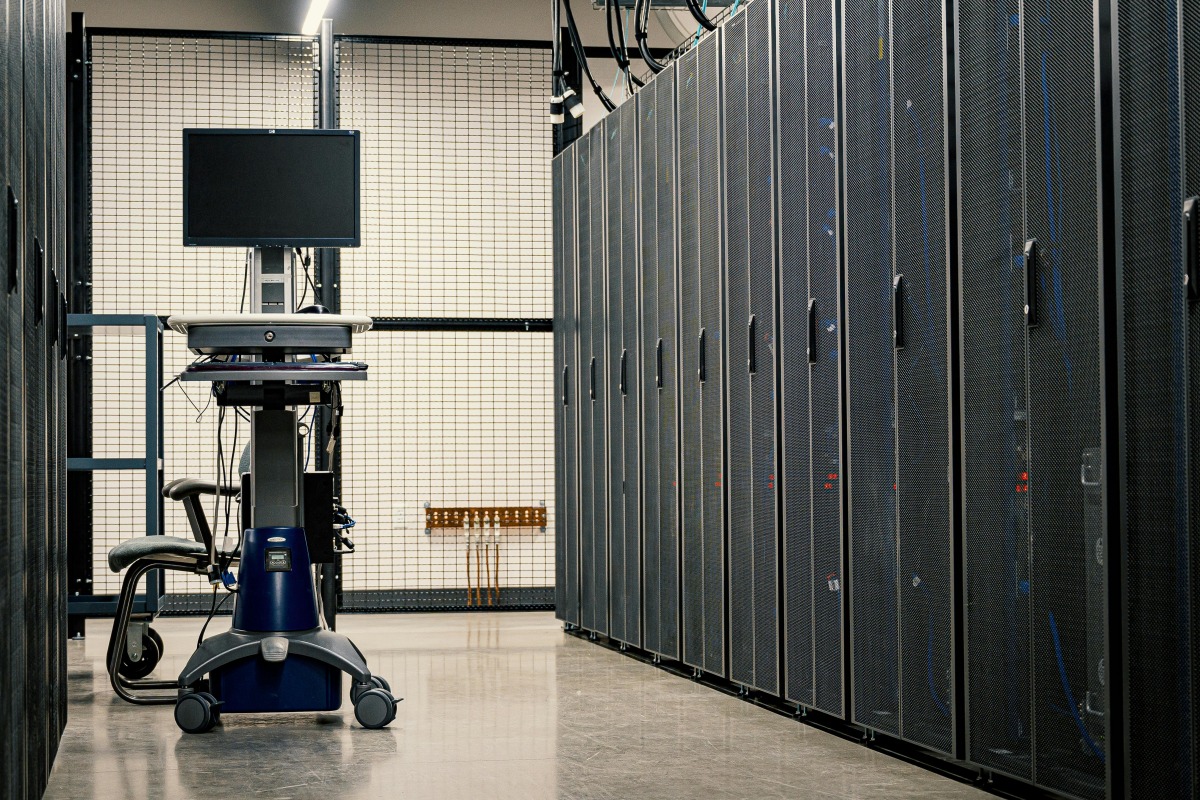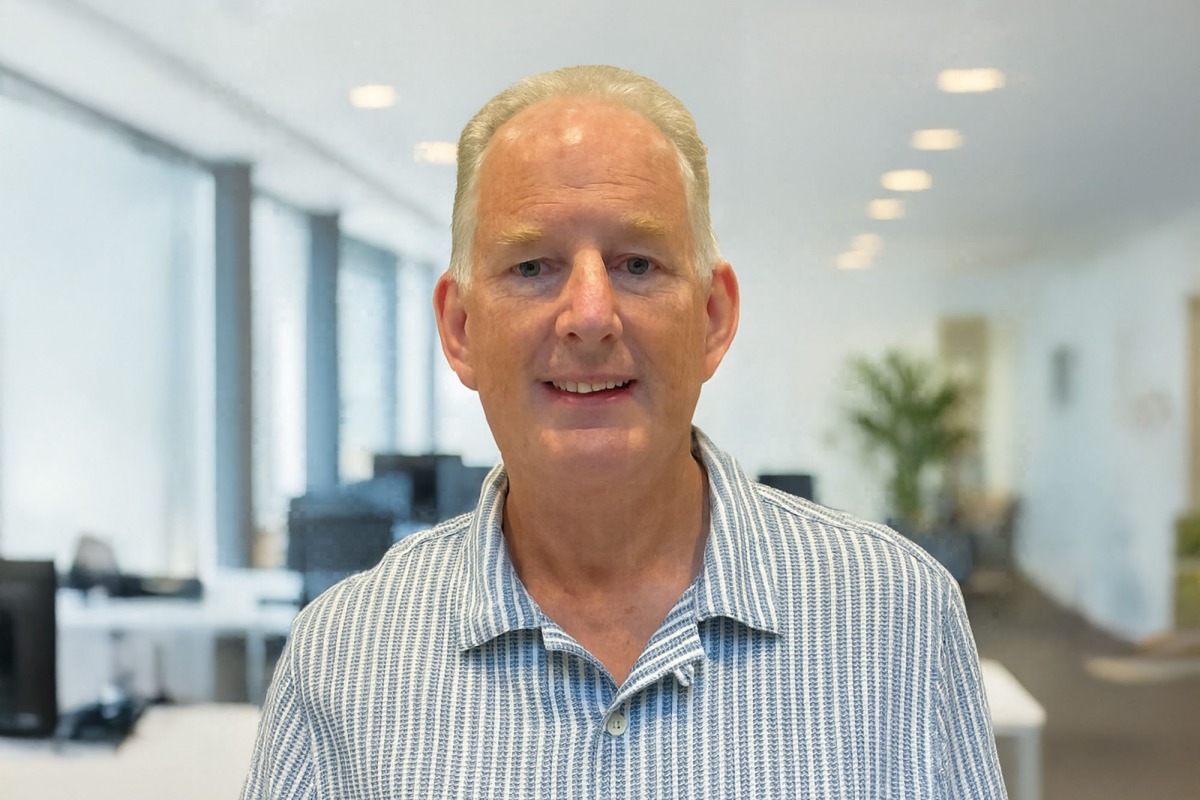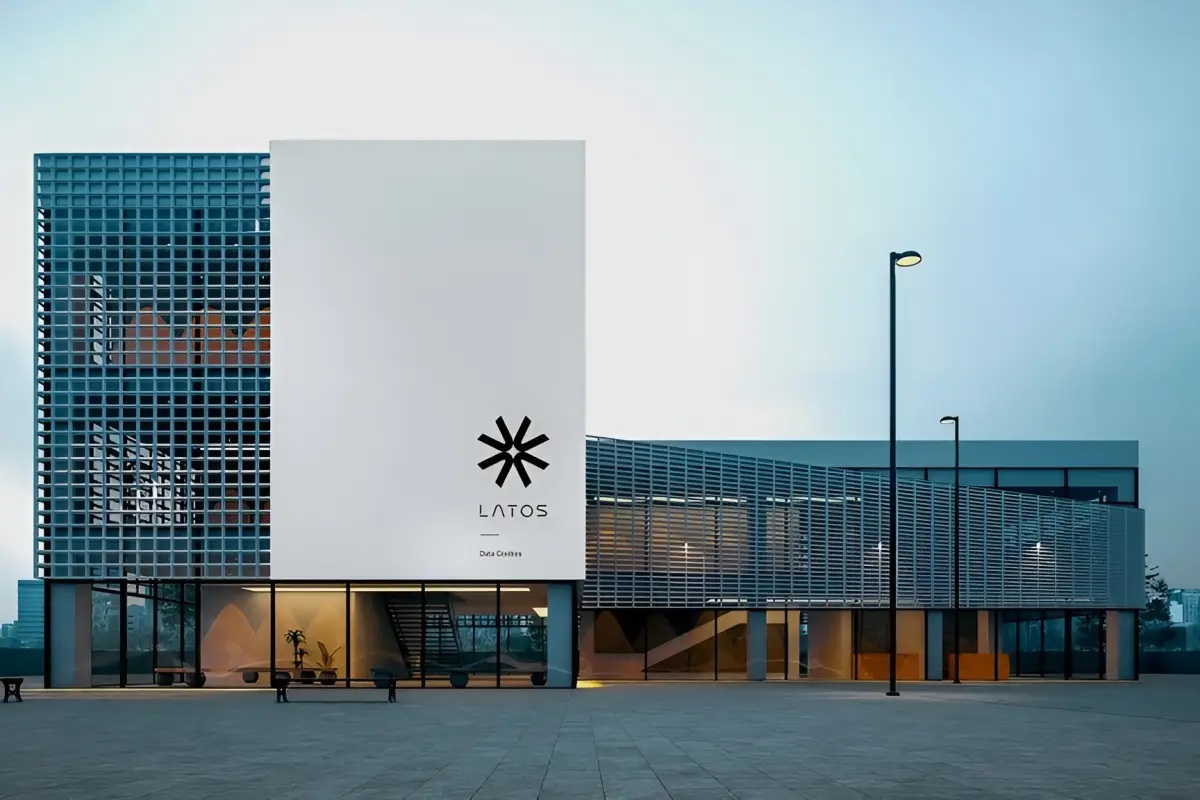Data Centre Business News and Industry Trends
Data Centre Business News and Industry Trends
Data Centres
News
EUDCA announces Board of Directors for 2025/27
Further to member voting during its annual general meeting (AGM) held on 11 June 2025, the European Data Centre Association (EUDCA), the representative body of the European data centre community, has announced its Board of Directors to steer it up to 2027.
Board members met subsequently to appoint key positions and renew the mandates of existing committees and their leadership.
A new Board to serve the EUDCA for 2025/27
Technical expertise, extensive experience, and commercial acumen is abundant across the Board, with knowledge spanning the entire data centre lifecycle, from investment and design to sustainability/ESG and operations.
The EUDCA says that the "combined expertise of the Board is instrumental for the Association to advocate and serve its members." The Board now comprises of the following:
• Lex Coors, Digital Realty — President of EUDCA & Policy Committee Chair• Laurens van Reijen, LCL Data Centres — Treasurer• Bruce Owen, Equinix — Vice President• Marie Chabanon, Data4 — Vice President, EUDCA & Technical Committee Chair• Isabelle Kemlin, Swedish Datacenter Industry Association — Vice President• Dick Theunissen, EdgeConneX — Vice President, EUDCA & NTA representative• Matt Pullen, CyrusOne — Board Member, EUDCA & CNDCP Chair• Adam Eaton, Global Switch — Board Member• Andrew Harrison, Arup — Board Member• Matthew Baynes, Schneider Electric — Board Member, EUDCA & NTA representative• Antoine Lesserteur, France Datacenter — Board Member• Stijn Grove, Dutch Data Center Association — Board Member, EUDCA & NTA representative• Michael Winterson, EUDCA — Secretary General
Leading the EUDCA
Lex Coors, Chief Data Center Technology and Engineering Officer at Digital Realty, unanimously retained his position as elected President to guide board and association operations.
Michael Winterson continues as Secretary General, with Laurens van Reijen of LCL Data Centers as Treasurer.
The EUDCA board also appointed four new Vice Presidents: Bruce Owen, Equinix; Marie Chabanon, Data4; Isabelle Kemlin, Swedish Datacenter Industry Association; and Dick Theunissen, EdgeConneX.
As a founding member of the Climate Neutral Data Center Pact (CNDCP), the EUDCA maintains a permanent Board seat at the Pact. As such, the EUDCA says it is happy to re-appoint Board Member Matt Pullen as the representative to the Pact where he will maintain his Chair position.
Michael Winterson, Secretary General, EUDCA, comments, “As Europe moves to deliver its goals for a booming digital economy and strong AI sector, its dependence upon digital infrastructure has never been more critical.
"The EUDCA continues to serve as the independent voice for Europe’s data centre community, connecting with policy makers to add nuance to the legislative process for regulations that advance digital growth.
“The EUDCA remains a trusted and authoritative voice for the data centre industry. In a world of changing sentiments, we maintain a focus on the efficiency and sustainability of data centre services through our close association with the CNDCP.
"As a board, we remain committed to being at the forefront of shaping policy within Europe, protecting the interests of our constituents whilst looking after the planet.”
EUDCA committees bolster leadership
Having renewed the mandates of existing committees with some restructuring, the Policy Committee sees Lex Coors reappointed as Chair and Eve Fensome (Stack Infrastructure) as Deputy Chair.
The Technical Committee will be led by Marie Chabanon as Chair and Chad McCarthy (nLighten) as Deputy Chair.
National trade associations work with the EUDCA
From the national trade associations, the three existing representatives - Stijn Grove, Dutch Data Center Association; Antoine Lesserteur, France Datacenter; and Isabelle Kemlin, Swedish Datacenter Industry Association - were confirmed as part of the board.
For more from the EUDCA, click here.
Joe Peck - 30 July 2025
Artificial Intelligence in Data Centre Operations
Data Centre Business News and Industry Trends
Data Centre Operations: Optimising Infrastructure for Performance and Reliability
Insights into Data Centre Investment & Market Growth
Report: 'UK risks losing billions in AI investment'
According to a new report published today from trade association TechUK, the Data Centre Alliance, Copper Consultancy, and law firm Charles Russell Speechlys, the UK risks losing out on billions in AI investment if it doesn’t take clear steps to unlock data centre development.
The report, How to Make the UK an AI Leader, brings together reflections from some of the biggest data centre developers - as well as planners and construction, engineering, and legal professions - at a recent industry roundtable organised by Copper and Charles Russell Speechlys.
The roundtable, and subsequent report, lay bare the challenges facing data centre development in the UK, and the impacts this could have on investment into UK plc.
Key regulatory barriers – such as energy availability, energy cost, and planning complexity – were identified alongside low public awareness as the main issues hobbling development of data centres in the UK.
Luisa Cardani, Head of Data Centre Programme at TechUK, says, “The insights in this report echo what TechUK and the sector have been advocating for a long time: the UK has the talent, the ambition, and the capability to lead in AI and digital infrastructure, but leadership is not guaranteed. It requires bold decisions, cross-sector collaboration, and a shared national vision.”
Steve Hone, CEO at Data Centre Alliance, adds, “As [a] trade association representing the UK data centre digital sector, we were delighted to be invited to collaborate in the recent roundtable which has culminated in the creation of this report.
"This timely report is an important contribution to the debate and hopefully will act as a catalyst for the action needed to ensure the UK’s digital infrastructure remains world leading.”
The report notes how high energy prices are currently hindering the UK's global competitiveness in data centres and AI - actively dissuading investment in the UK.
Given the resource-intensive nature of data centres, the report suggests that the industry needs the Government to intervene through targeted subsidies, reducing costs to match energy costs in rival regions like the US and Nordics.
Concerns have also been raised with 'AI Growth Zones' being seen as a "silver bullet for the industry."
Whilst, according to the report, the industry welcomes government support, the current planning framework is seen as "overly rigid" and "risks misalignment with actual demand and repeating past planning mistakes like Slough's unplanned growth."
As a response, a new planning use class could allow for flexible, demand-led planning, which would be especially important in the fast-moving AI industry.
Finally, public perception is seen as a critical non-regulatory issue for the sector to tackle, with half the UK’ s population not knowing what a data centre is. Such low awareness leaves the public open to misinformation and a fundamental lack of understanding as to why data centres are critical to a future economy.
The report calls on the industry to engage more proactively on the needs case for data centres with the public, supported by the Government outlining why their development is critical to growth.
Ronan Cloud, Director at Copper Consultancy, argues, “While Grey Belt reforms are beneficial, considerable planning inertia remains. Government should create a dedicated planning use class for data centres at once, distinct from broader industrial uses.
"This tailored classification would increase planning approvals and accommodate future technological developments.”
Kevin Gibbs, Senior Consultant at Charles Russell Speechlys, comments, “Whilst the Government’s AI Opportunities Action Plan commits £2 billion to AI Growth Zones to accelerate infrastructure delivery, there is much more that both the industry and Government can, and should, be doing.
"To truly become an AI leader and unlock economic growth, the UK needs to make a clear and compelling case for data centres. It needs to act now to alleviate some of the barriers.”
Joe Peck - 30 July 2025
Data Centre Business News and Industry Trends
Data Centres
Insights into Data Centre Investment & Market Growth
News
Ex-Google Lauri Ikonen joins Polarnode
Polarnode, a Finnish data centre developer that focuses on environmentally sustainable data centre construction and operation, has announced the appointment of Lauri Ikonen as its new Head of Technology, effective from 1 September.
The appointment comes as the company accelerates its growth strategy to aim to become a leading data centre platform across the Nordic region.
Ikonen joins Polarnode at a time of increasing demand for data centre capacity across the Nordics. He brings more than two decades of experience in large-scale infrastructure, with a particular focus on mission-critical operations, backup power, and cooling technologies.
From 2016 to 2023, Ikonen held a series of senior roles at Google’s data centre organisation, including Site Lead and Site Operations Manager at the company’s Hamina campus in Finland. During this period, the site expanded significantly, and daily operations grew to support approximately 400 personnel.
More recently, he served as Chief Strategy and Operating Officer at UpCloud, where he was responsible for strategic management, operational oversight, and service reliability across 13 global data centre locations.
His earlier career includes leadership roles in ABB’s Power Division, where he worked on industrial-scale infrastructure and service management.
“We are thrilled to welcome Lauri to the team,” says Mikko Toivanen, Chair of the Board at Polarnode.
“His deep experience in managing and scaling hyperscale data centre infrastructure will be instrumental as we accelerate our development strategy and respond to the growing market need for high-performance, sustainable, and resilient data centre capacity.”
In his new role, Ikonen will lead Polarnode’s technology strategy and oversee the design and implementation of upcoming sites. He will also guide the company’s entry into colocation services, supporting its long-term ambition to deliver clean, high-performance infrastructure to support the growing digital economy.
“The Nordic region is rapidly becoming a global hub for digital infrastructure,” comments Lauri. “Polarnode is well positioned to lead that transformation with its forward-thinking approach. I’m excited to contribute to its next phase of growth.”
Polarnode is 100% Finnish-owned and has so far announced major data centre developments in Lappeenranta, Nokia, and Pori.
Joe Peck - 29 July 2025
Commercial Real Estate: Property Developments, Trends & Infrastructure
Data Centre Business News and Industry Trends
Insights into Data Centre Investment & Market Growth
Echelon announces €2bn for Spanish data centre construction
Echelon Data Centres, an Irish-owned developer and operator of large-scale data centre infrastructure, has announced the signing of a joint venture (JV) agreement with Iberdrola, a global renewable power producer, to build and operate data centres in Spain.
Echelon’s major shareholder is Starwood Capital Group, a global private investment firm with approximately $115 billion (£85.72 billion) in assets under management in North America, Europe, and Asia.
Driven by the growing demand for cloud and AI services, the agreement is intended to expand Echelon’s international data centre portfolio with 100% of its Spanish power infrastructure and energy supply needs provided by Iberdrola.
Echelon will be responsible for the planning, design, commercialisation, and day-to-day management of the JV, while Iberdrola will source and secure suitable land plots with grid connectivity for data centre development, as well as ensuring a continuous 24/7 supply of clean energy.
Echelon will own 80% of the JV, with Iberdrola owning the remaining 20% through its dedicated digital infrastructure subsidiary, CPD4Green.
Echelon Data Centres has more than 600 MW of capacity either operational or in planning in Ireland and the UK. CPD4Green has already secured more than 700MW of power connections, including Tier-1 locations close to Madrid and in Aragon.
The first of the JV projects to be constructed will be Madrid South, a 160,000m² campus, expected to reach ready for service by 2030.
The site has already secured a power connection of nearly 230 MW. An on-site solar PV facility will supply the DC with renewable energy, complemented by additional clean energy capacity from Iberdrola.
The alliance between Echelon and Iberdrola aims to enable renewable energy generation and infrastructure to realise a sustainable future for data centre development across Spain.
The collaboration is underpinned by guarantees to generate and consume renewable energy to support the operation of the data centres on a long-term basis.
These data centres will align with the sustainability targets of both Echelon Data Centres and Iberdrola while also aligning with the objectives of the EU’s Climate Neutral Data Centre Pact.
Commenting on the new partnership, David Smith, Chief Investment Officer at Echelon Data Centres, says, “Entering the Spanish data centre market has been a strategic goal for Echelon for several years.
"Spain has material benefits as a market for our customers: a supportive regulatory and policy environment, high-quality talent from both a construction and operational perspective, and access to some of Europe’s lowest price renewable energy, in scale.
"Our partner, Iberdrola, is a world leader in building and operating generation assets and we are delighted to have this opportunity to partner together to deliver critical infrastructure for our customers.”
David Mesonero Molina, Corporate Development Director of Iberdrola, adds, "This agreement reinforces Iberdrola's strategy of facilitating the development of data centres, which have already become a key vector for the growth in electricity demand.
"The alliance signed with Echelon will allow us to value our portfolio of sites with access to electricity connection and our ability to offer these infrastructures safe, clean, and competitive energy 24 hours a day, 365 days a year."
For more from Echelon Data Centres, click here.
Joe Peck - 28 July 2025
Commercial Real Estate: Property Developments, Trends & Infrastructure
Data Centre Business News and Industry Trends
Insights into Data Centre Investment & Market Growth
Quantica launches to accelerate data centre site development
Quantica Infrastructure, a US-based company that develops integrated systems for clean energy infrastructure projects, has officially launched with the aim of streamlining data centre deployment across North America.
The company says it focuses on delivering "shovel-ready" sites that combine access to renewable energy, traditional grid power, and robust network connectivity.
By offering an integrated, pre-prepared model for data centre development, Quantica aims to reduce project risk, speed up delivery, and simplify logistics. The company also emphasises a holistic approach that accounts for both environmental and community benefits.
Quantica is backed by the Energy Transition arm of EnCap Investments, a US-based private equity firm that has raised approximately $47 billion (£35 billion) in capital since its founding in 1988.
Together, the two companies aim to address infrastructure constraints in a market where demand for data centre capacity is rapidly increasing.
“Hyperscale and AI growth are demanding better solutions for power, land, and network connectivity,” says John Chesser, CEO and founder of Quantica Infrastructure.
“Quantica unlocks new opportunities by delivering shovel-ready, network-ready sites with dedicated renewable energy and resilient power supplies, so our customers can focus on innovation, not infrastructure logistics.”
Quantica’s leadership team includes professionals with experience across the energy, network, and data centre sectors.
Collectively, they have delivered more than 15GW of energy projects, constructed large-scale data centre campuses in 22 US states, and developed regional and international networks for global technology clients.
“Quantica’s platform is the solution needed to break through current barriers to AI and digital infrastructure expansion,” claims Jim Hughes, Managing Partner at EnCap.
“It gives us the opportunity to invest across the full spectrum of digital infrastructure – from renewable power generation to real estate and network connectivity. We’re excited by Quantica’s project pipeline and the momentum behind digital infrastructure growth.”
Joe Peck - 28 July 2025
Data Centre Business News and Industry Trends
Insights into Data Centre Investment & Market Growth
News
Kao Data appoints new Chief Business Officer
Kao Data, a developer and operator of data centres engineered for AI and advanced computing, has announced that Clinton Hasell has been appointed as the company’s new Chief Business Officer.
A seasoned, board-level executive with over 30 years of commercial and operational experience across the data centre, telecoms, and digital infrastructure sectors, Clinton has been named Chief Business Officer to spearhead the optimisation of Kao Data’s core business operations.
This includes the key responsibility for the company’s technology deployments and enterprise-level reporting.
Within his new role, Clinton will also lead the development function for Kao Data’s advanced infrastructure platform, aligning the organisation’s UK and European expansion plans.
“I am excited to move into my new role as Chief Business Officer and to work together with both our C-Suite and our talented organisational teams to help drive the company’s growth objectives from inception to delivery,” comments Clinton Hasell, new Chief Business Officer, Kao Data.
“Kao Data has established a market-leading position as a data centre developer and operator at the bleeding edge of AI deployment and it’s fitting we use the power of AI and advanced computing to deliver true business transformation.”
“On behalf of the company and our board, I am delighted to welcome Clinton Hasell to the Senior Management Team as our new Chief Business Officer, and at a time of transformation and evolution for the company,” says David Bloom, founder and Executive Chairman, Kao Data.
“Clinton has been a key part of our team for some time within a consultancy capacity, and it’s a fantastic endorsement of our future plans and ambitions that we have permanently secured his contribution as we develop new sites to scale our data centre platform across the UK and Europe.”
Prior to joining Kao Data, Clinton was a member of the Global Switch management team where, as Executive Group Director, Europe, he was responsible for maximising profitable growth across its European division.
He also held senior leadership roles at Interxion, from its $1 billion (£744 million) IPO in 2011 to its $8 billion (£5.95 billion) acquisition by Digital Realty Trust in 2020.
For more from Kao Data, click here.
Joe Peck - 25 July 2025
Commercial Real Estate: Property Developments, Trends & Infrastructure
Data Centre Business News and Industry Trends
Data Centres
News
Ryze develops brand for data centre newcomer, Latos
UK creative agency Ryze has delivered a full brand identity for Latos, a fast-growing data centre developer building a UK-wide network of AI-ready facilities to support the country’s digital infrastructure.
From strategic positioning through to messaging, identity, and digital design, Ryze has developed the Latos brand from the ground up.
With a focus on fast-scaling technology and SaaS firms, the agency says it aimed to deliver a brand that communicates Latos’ ambition to build smarter, more sustainable infrastructure without the use of technical jargon.
The project arrives at a time of rising demand for UK data centres, driven by increased AI adoption and government infrastructure investment. Chipmaker NVIDIA recently identified the UK as a “critical node” in its global expansion strategy.
David Smith, Founder of Ryze, comments, “The Latos brand evokes ambition, energy, and a sense of clarity.
"Visually, we avoided the conventional clichés of the sector and instead built a brand that moves – a timeless, modern foundation with a dynamic, confident colour palette and a distinctive icon set that adapts to different platforms and partners.
"It’s a future-facing brand for a future-building company.”
Peter Wilcock, Board Member at Latos, adds, “We’re not interested in doing what everyone else does. The market’s already full of that.
"Our vision is about scale and creating smarter, more agile builds that fit the needs of today’s digital infrastructure.
"Having a brand that reflects that disruption isn’t just useful, it’s essential. It’s how we connect with the right partners and show the market who we are.”
Latos is currently developing 11 UK sites, with plans to establish 40 facilities by 2030. The company’s standardised designs are intended to enable faster rollout and regional deployment, with all sites built for high-performance computing and real-time AI.
“This wasn’t just about giving Latos a logo but about shaping a brand that could open doors, attract capital, and be bold in a sector where most look and sound the same,” David concludes.
“That thinking runs through all of our work, whether it’s for a SaaS platform or data centre developer, because strong branding isn't defined by sector or subject matter, but by ethos and purpose.”
Joe Peck - 24 July 2025
Data Centre Business News and Industry Trends
Data Centre Infrastructure News & Trends
Innovations in Data Center Power and Cooling Solutions
News
Riello UPS Ireland appoints new Managing Director
Critical power protection specialist Riello UPS Ireland has announced the appointment of Ian Jackson as its new Managing Director.
With more than 25 years of commercial, technical, and management experience in the critical power industry, Ian takes on overall day-to-day responsibilities for leading the company, which is now based in a facility in H2 Baldonnell Business Park, Dublin 22, after recently relocating from its original premises in Ballycoolin, Dublin 11.
Ian has a long history in the power protection industry, including nearly 20 years managing Pure Power Systems, an independent UPS distributor he founded and scaled until its acquisition by a US multinational company in 2017.
He holds a degree in Electrical Engineering from TU Dublin, a Postgraduate Certificate in Energy Systems and Decarbonisation from Dublin City University, and an MBA from Dublin City University Business School.
His appointment signals a renewed push to increase brand awareness of Riello UPS in the data centre, pharmaceutical, food and beverage, medtech, aviation, fintech, and telecoms markets.
Riello UPS Ireland launched in November 2022, becoming the seventeenth subsidiary of the Italian headquartered RPS, the second-largest manufacturer of uninterruptible power supplies (UPS) in Europe.
Ian comments, “I was very fortunate to be the first Irish distributor of Riello UPS systems when I formed Pure Power Systems back in 2003 and am now privileged to directly represent this wonderful company in Ireland.
“I’m really looking forward to reconnecting with my many colleagues throughout the industry and leading our fantastic team to offer the very best in critical power products and services.”
Ian will work closely with Leo Craig, the long-standing Managing Director of Riello UPS in the UK, who, until this appointment, had previously combined overseeing both the UK and Irish subsidiaries.
Leo says, “We are thrilled to welcome Ian to the team. He brings incredible commercial, technical, and management experience, as well as a huge passion for leadership and customer service.
“Riello UPS is already a well-established brand in Ireland with strong links through several resellers and distributors. But we still have huge untapped potential for growth, and we believe under Ian’s stewardship we are now well-placed to fully capitalise on this expanding market for us.”
An uninterruptible power supply (UPS) provides protection against electrical power outages and disturbances. It offers instantaneous battery backup that enables critical equipment like computers, IT systems, and machinery to keep running until the power returns or a standby generator kicks in.
For more from Riello UPS, click here.
Joe Peck - 18 July 2025
Commercial Real Estate: Property Developments, Trends & Infrastructure
Data Centre Business News and Industry Trends
Data Centres
Insights into Data Centre Investment & Market Growth
W Denis launches insurance offering for data centres
W Denis, a UK-based, independent insurance broker, has launched a new specialist division focused exclusively on insuring data centres and their integrated power generation infrastructure.
W Denis’ new division is unique in the insurance market by offering dedicated cover not only for the data centre buildings, plant, and technology, but also for the electricity generation assets, such as traditional CHP through to modern clean/green tech power, solar, wind, and hybrid systems, which provide resilience and independence from grid failures.
Capacity in the billions (£/€/$) is available through either direct insurance or facultative reinsurance structures, arranged with global insurers and reinsurers. This enables support for single-site, multi-site, and portfolio programmes across diverse geographies.
The offering includes a range of risk and insurance solutions for all phases of a data centre’s lifecycle:
• Construction all risks (CAR), including delay in start-up• Operational property damage and machinery breakdown• Business interruption, including utility failure triggers• On-site power generation asset insurance• Third-party legal liabilities• Legal indemnities (e.g. planning, easements)• Cyber, data breach, and E&O exposures• Specialist claims support and advocacy
In addition to insurance placement, W Denis says it provides clients with risk management consultation during pre-design, construction, and operational stages. This includes engineering risk reviews, loss prevention advice, and support with resilience planning.
Mark Dutton, Chief Commercial Officer at W Denis, comments, “Data centres are among the most critical and energy-intensive assets in the modern economy. Our new division recognises that effective insurance must cover both the data and the power that keeps it alive. Our clients benefit from deep technical expertise, strong capacity, and joined-up coverage from build to operation.”
Joe Peck - 16 July 2025
Data Centre Business News and Industry Trends
Insights into Data Centre Investment & Market Growth
News
Data centres could generate €26bn for Portuguese economy
Portugal is establishing itself as one of Europe’s main digital and AI ready hubs, and further growth in data centre development in the country could contribute up to €26 billion (£22.5 billion) to the national GDP between 2025 and 2030 - an average of €4.4 billion (£3.8 billion) per year - according to a study conducted this year by Start Campus, a Portuguese data centre development company, and economics consultancy Copenhagen Economics.
Direct and indirect socio-economic impact
The study, Assessment of the Socio-Economic Benefits of the Data Centre Sector in Portugal, released this Monday estimates that the sector could support up to 50,000 full-time jobs every year, including direct, indirect, and induced employment, provided favourable investment and regulatory conditions are in place.
Between 2022 and 2024, data centres already added €311 million to Portugal’s GDP, sustaining around 1,700 jobs annually - drawing and retaining skilled professionals and strengthening regional cohesion whilst opening up new education pathways.
The report highlights Portugal’s bench of qualified talent in data-centre-relevant fields - a sentiment echoed by digital ecosystem stakeholders - and notes a solid tech base of roughly 230,000 ICT specialists alongside a high proportion of STEM graduates.
Artificial intelligence as a driving force
The study also points out that by 2030, around 70% of computing capacity will be dedicated to AI applications, underscoring the need for modern, resilient, and sustainable infrastructure. Demand for this capacity is expected to grow at a rate of 33% per year through the end of the decade.
The widespread adoption of cloud computing, big data, and AI solutions by companies and public entities depends on the existence of efficient and scalable data centres capable of ensuring low-latency connectivity. Without this foundation, the full potential of digital technologies for businesses, public services, and users could be compromised.
Portugal’s competitive advantages
The analysis indicates that Portugal is well-positioned to become a key hub in AI and digital infrastructure in Europe.
This is underpinned by a competitive electricity cost – approximately 30% below the European average – and a large supply of electricity from renewable sources – namely 87.5% of total net generation. Portugal’s Atlantic coast also provides conditions for resource-efficient cooling solutions that contribute to reducing freshwater consumption, energy consumption, and operational costs, such as the use of seawater.
Portugal benefits from a robust connectivity infrastructure, with approximately 25% of the world’s submarine cables passing through the country. It also offers 92% fibre optic coverage, ranking as the third-best network in the European Union (EU).
“Portugal has all the right conditions to establish itself as a leading digital and AI hub in Europe: strategic connectivity, clean energy, and a highly skilled workforce. This study confirms that, with the right public policies, data centres can become a driver of economic growth and territorial cohesion,” says Robert Dunn, CEO of Start Campus.
"Portugal is emerging as a key European destination for data centre investments, yet achieving its fullest potential cannot be taken for granted given intense international competition to host digital infrastructures. There are already significant economic benefits from existing data centres alone, which represent a fraction of future opportunities,” comments Bruno Basalisco, Director at Copenhagen Economics.
Policy conditions will shape future investments and corresponding socio-economic benefits
To ensure the full development of the sector and to make the most of this industry’s potential, the study outlines some areas of action where policymakers could consider fostering investments:
1. Ensure predictability and access to the electrical grid and components such as chips;
2. Streamline licensing processes for both technological and energy infrastructures;
3. Develop targeted measures for data centre investment;
4. Promote digitalisation and AI adoption across the business sector and public administration.
The Copenhagen Economics report is based on an input-output macroeconomic model, using data from Eurostat, the OECD, and national operators. It also includes interviews with more than 15 stakeholders from the digital ecosystem, including AICEP, ANACOM, FCT, international technology companies, and local authorities.
For more from Start Campus, click here.
Joe Peck - 15 July 2025

Head office & Accounts:
Suite 14, 6-8 Revenge Road, Lordswood
Kent ME5 8UD
T: +44 (0)1634 673163
F: +44 (0)1634 673173









